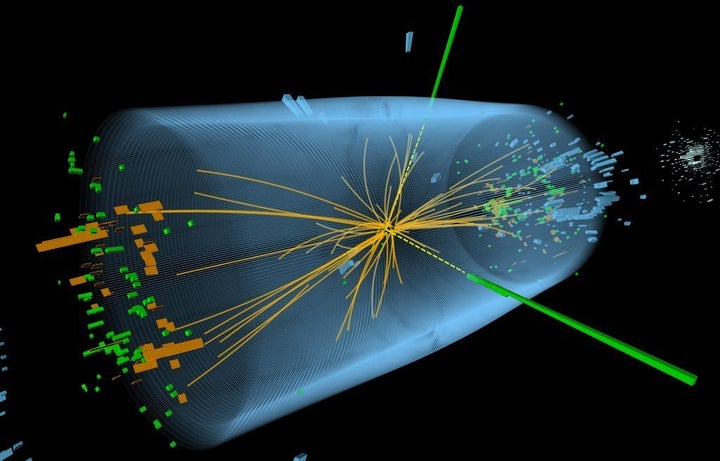
By Michael Moyer
A month ago scientists at the Large Hadron Collider released the latest Higgs boson results. And although the data held few obvious surprises, most intriguing were the results that scientists didn’t share.
The original Higgs data from back in July had shown that the Higgs seemed to be decaying into two photons more often than it should—an enticing though faint hint of something new, some sort of physics beyond our understanding. In November, scientists at the Atlas and LHC experiments updated everything except the two-photon data. This week we learned why.
Yesterday researchers at the Atlas experiment finally updated the two-photon results. What they seem to have found is bizarre—so bizarre, in fact, that physicists assume something must be wrong with it. Instead of one clean peak in the data, they have found two. There seems to be a Higgs boson with a mass of 123.5 GeV (gigaelectron volts, the measuring unit that particle physicists most often use for mass), and another Higgs boson at 126.6 GeV—a statistically significant difference of nearly 3 GeV. Apparently, the Atlas scientists have spent the past month trying to figure out if they could be making a mistake in the data analysis, to little avail. Might there be two Higgs bosons?
Although certain extensions of the Standard Model of particle physics postulate the existence of multiple Higgs bosons, none of them would predict that two Higgs particles would have such similar masses. They also don’t predict why one should preferentially decay into two Z particles (the 123.5 GeV bump comes from decays of the Higgs into Zs), while the other would decay into photons.
The particle physicist Adam Falkowski (under the nom de plume Jester) writes that the results “most likely signal a systematic problem rather than some interesting physics.” (By “systematic problem” he means something like a poorly-calibrated detector.) The physicist Tommaso Dorigo bets that it’s a statistical fluke that will go away with more data. Indeed, he’s willing to bet $100 on it with up to five people, in case you’re the kind of person who likes to wager on the results of particle physics experiments with particle physicists. The Atlas physicists are well aware of both of these possibilities, of course, and have spent the past month trying to shake the data out to see if they can fix it. Still, the anomaly remains.
But let’s not let this intriguing blip distract us from the original scent of new physics. Back when the preliminary data seemed to show that the Higgs was decaying into two photons more often than it should, I wrote that it could be “a statistical blip that would wash away in the coming flood of data.” But more data has now arrived, and the blip hasn’t gone anywhere. The Higgs boson continues to appear to be decaying into two photons nearly twice as often as it should.
All the more reason to stay tuned for the next big data release, currently scheduled for March.
